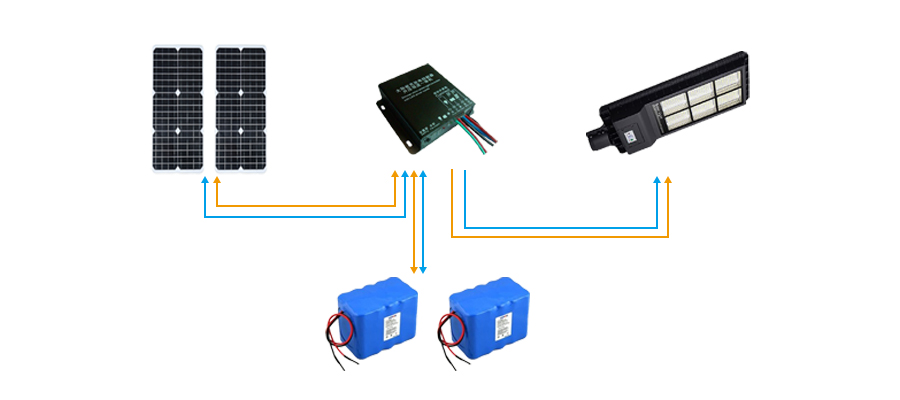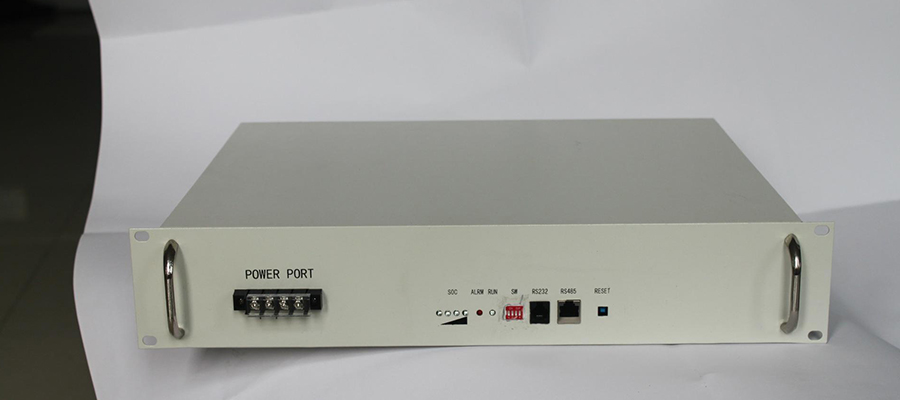How to Extend Lifespan of All In One Solar Street Light Batteries?
2021-05-27
VIEW "1680
All in one solar street lights are installed in more and more places due to the renewable and environmentally friendly solar energy. Solar street lamps are composed of solar panels, rechargeable battery, lighting fixture, controller. In the solar street light system, the battery plays the most significant role and its lifespan is the shortest. The lifespan of the battery has become the most important factor in the use of the solar street light system. Therefore, we must use the battery rationally to extend its lifespan. How can the lifespan of the solar street lamp battery be extended in practical applications? In this article, we detailed how to extend solar battery life.

1. Reasonably calculate the required capacity of the battery
Before installing the all in one solar street light, we must design the battery capacity of the solar street light. According to the lighting hours, the local weather conditions, the number of cloudy and rainy days and other parameters, we can calculate the required capacity of the battery. The battery capacity should not be too small or too large. If the battery capacity is small, it will be over-discharged frequently. If the capacity is large, it will often be insufficiently charged and will always be in a state of power deficit. It is necessary to resolutely avoid the occurrence of serious battery loss and over-discharge due to unreasonable battery capacity design, which will cause internal changes in the battery and affect the lifespan of the rechargeable battery. Therefore, a reasonable calculation of the required capacity of the battery is a prerequisite to ensure the lifespan of the battery.
2. Control of battery cut-off discharge voltage

The lifespan of a battery is related to its depth of discharge. The lifespan of a battery with a discharge depth of 50% is much longer than a battery with a discharge depth of 100%. The greater the depth of discharge, the shorter the battery lifespan. It is necessary to reasonably control the cut-off discharge voltage of the battery. Generally, the discharge cut-off voltage of the solar street lamp battery is controlled between 11.2V and 11.5V, which is beneficial to control the discharge depth of the battery and prolong the lifespan of the battery.
3. Battery temperature control
The lifespan of the battery is also closely related to the temperature. Every 10°C increase in the ambient temperature relative to 25°C will reduce the battery life by half. Low temperature has no effect on the battery life, but it will affect the effective capacity of the battery. Therefore, it is particularly important to provide an ideal working environment for the battery. The battery is buried deep underground, which can effectively solve the battery temperature problem. Research has found that due to the presence of geothermal at a certain depth below the ground surface, the temperature is less affected by the change of the outside air temperature. When the outside temperature is high, the temperature under the surface is lower than the outside temperature. When the outside temperature is low, the temperature under the ground is higher than the outside temperature. We should try to avoid the battery hanging on the pole body of the solar street light, so that the temperature of direct sunlight in summer is too high, and the temperature is too low in winter, which will affect the lifespan of the solar street light battery.
4. Pay attention to waterproof
The housing of the battery has a waterproof function, and the design of the waterproof lead of the solar battery can also prevent water from entering the lead. But if the battery is immersed in water for a long time, it will still affect the lifespan of the battery.
5. Pay attention to monitor the voltage of all in one solar street light battery
When the solar street lamp does not turn on for several days, check the battery voltage. If the voltage is too low, lower than the cut-off discharge voltage controlled by the controller, and below 10.8V, the battery will be over-discharged seriously. If this happens, check the system carefully to see if the solar panel is working properly and if there is a problem with the controller. If there is no problem with other components, the light wire should be removed first. The solar panel will charge the battery for 5-7 sunny days under the control of the controller, and then check the battery voltage. If the voltage is normal, connect the light wire and use it normally. Do not allow the battery voltage to be too low, so that the battery is not fully charged, which will affect the lifespan of the battery.
6. Choose right battery manufacturer
There are many types of batteries, including start-up batteries, power batteries, and UPS batteries. Because the battery application environment, discharge current, depth of discharge, etc. are different, various types of batteries cannot be universal, so you must choose a battery dedicated to solar energy. At the same time, choose the battery produced by a regular manufacturer, so that the battery performance is stable, after-sales protection is guaranteed, and the battery has a long lifespan, thereby promoting the overall lifespan of the all in one solar street light system.

